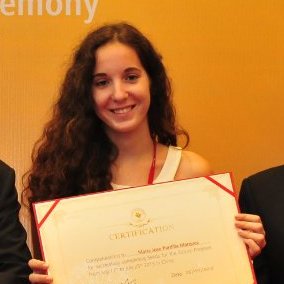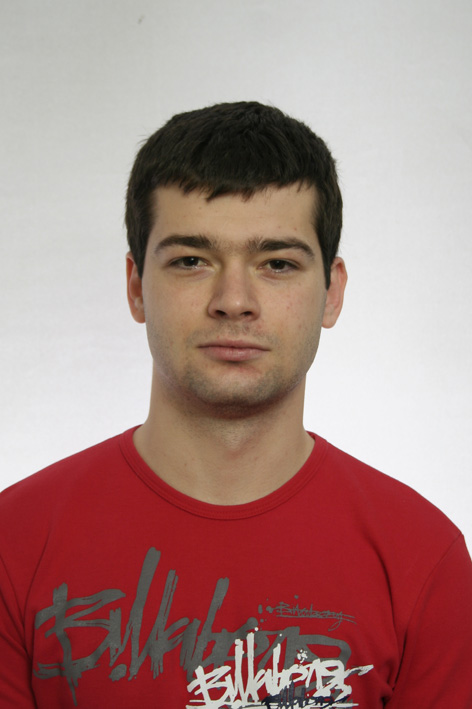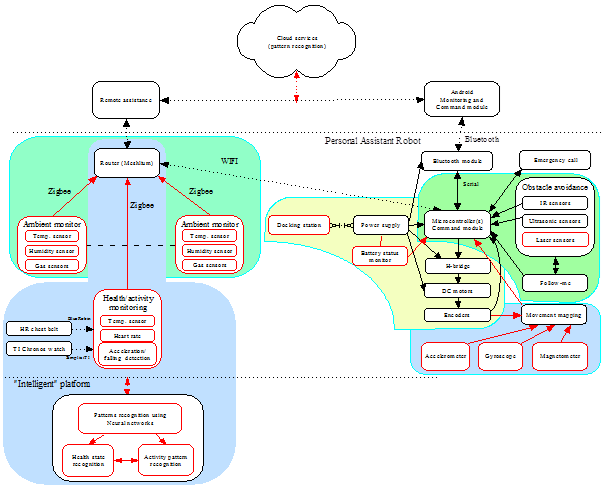Innovative Solutions for Assistance of Active Daily Life at Home
Istvan Oniga
Description
Keywords: Ambient assisted living; Human activity monitoring; Activity recognition; e-Health; Assistive robots
H2020 challenge: Health, demographic change and wellbeing
Knowledge and skills (P: prerequisite; D: desirable, but not necessary): “general ICT knowledge” (P); “ambient assisted living (AAL); technologies” (D); “wearables for e-health” (D); “(assistive) robots” (D); “wireless data transmission technologies” (D); “data analysis and visualization techniques” (D); “Android applications development” (D); “cloud computing” (D); “web-page programming” (D).
- Study of existing solutions for (some of the) following topics [3-10]: intelligent assistive houses; assistive robots; human activity monitoring wearable devices; physiological parameters monitoring wearable devices; possibilities for data storage, visualization and analysis; pervasive and mobile applications for activity monitoring and daily life assistance.
- Study about required assisted living devices, services and user acceptance of existing ones. The above study and questionnaire should improve understanding of the possible improvements of devices and services for health monitoring and to prevent, detect, treat and manage disease and how to support older persons to remain active and healthy.
- Proposal of new solutions and ideas regarding the above topics. Tele-assistance, tele-medicine scenarios and mobile application development based on above studies may be developed. Characteristics of the proposed solutions should be cost-effectiveness, reliability, flexibility, applicability to realistic settings, safety and acceptability to end-users. The proposed solutions should be built on advances in ICT but should pay attention to multi-disciplinary aspects involving sociological, behavioural and other relevant disciplines. Gender and ethical issues must also be considered.
Five INNOSOC students, supervised by two INNOSOC lecturers, will collaborate on answering how innovative ICT solutions for assisting elderly or sick people in their everyday activities can improve their daily life at home. These activities will be conducted as a part of the ERASMUS+ blended mobility and will be finalized during INNOSOC Zagreb 2016 workshop in late April 2016.
- improve our ability to monitor health and to prevent, detect, treat and manage disease;
- support older persons to remain active and healthy.
This Case Study aims to find and integrate new solutions built on advances in ICT and Internet of Things (IoT). Although there are many solutions for activity and health status monitoring, we still lack integrated solutions that are characterized with sufficiently high degree of acceptability by the elderly.
First, the Case Study will cover new trends and technologies in ambient assisted living (AAL) trying to promote the usage of innovative solutions for communication (e.g., Bluetooth Low Energy and Zigbee), data storage and processing in cloud, visualization on mobile devices and smart TVs.
Second, the Case Study aims to find solutions regarding AAL, activity and health monitoring systems based on latest advances in ICT. ICT and web-based technologies create opportunities to help people in their daily life while monitoring them to promote their independence, safety and social contact through communication solutions offered by using ICT solutions.
Third, lifestyles in different countries are different. Assisted living may have manifold interpretations depending on the nationality of elderly people. The teamwork, where members are from different countries, is a great opportunity to discover and identify the special characteristics of the demands arose across the countries the students are from.
Questions that need answers
- What are the ambient assisted living (AAL) systems main features? What are the most desired features?
- What kind of hardware (processing units, sensors, I/O devices) and software can be used to monitor human activity in home environment and what are their characteristics?
- What type of communication protocols are used in AAL systems? Outline pros and cons (e.g., range, energy efficiency, cost-effectiveness, reliability, flexibility) for each of them.
- How could assistive robots improve everyday life of older people from point of view of personal assistance, active living, mental health and social inclusion? Describe some scenarios.
- What is the state of the global AAL systems market (sales, costs, reliability, flexibility, applicability to realistic settings, acceptability, popularity)?
- What kind of physiological parameters can be monitored at home and how can be used this data remotely? What are the security issues of people using the devices and data security?
- What are the most used human activity recognition methods, what are their computational requirements and where can be done this?
- What possibilities exist for data storage, visualization and analysis of human activity and health parameters? Outline pros and cons.
- How popular are pervasive and mobile applications for activity monitoring and daily life assistance and what is the state of tele-health or health-related services and information via telecommunications technologies?
- How can we innovate the AAL systems? Analyse devices and services for health monitoring to prevent, detect, treat and manage disease and how to support older persons to remain active and healthy?
Case study supervisors

Istvan Oniga
Lecturer
Case study students

Mina HE
INNOSOC 2016 Student

María José Pardilla Márquez
INNOSOC 2016 Student

Peter Straub
INNOSOC 2016 & 2017 Student

Dario Pevec
TEAMSOC Web & Social Media Administrator


